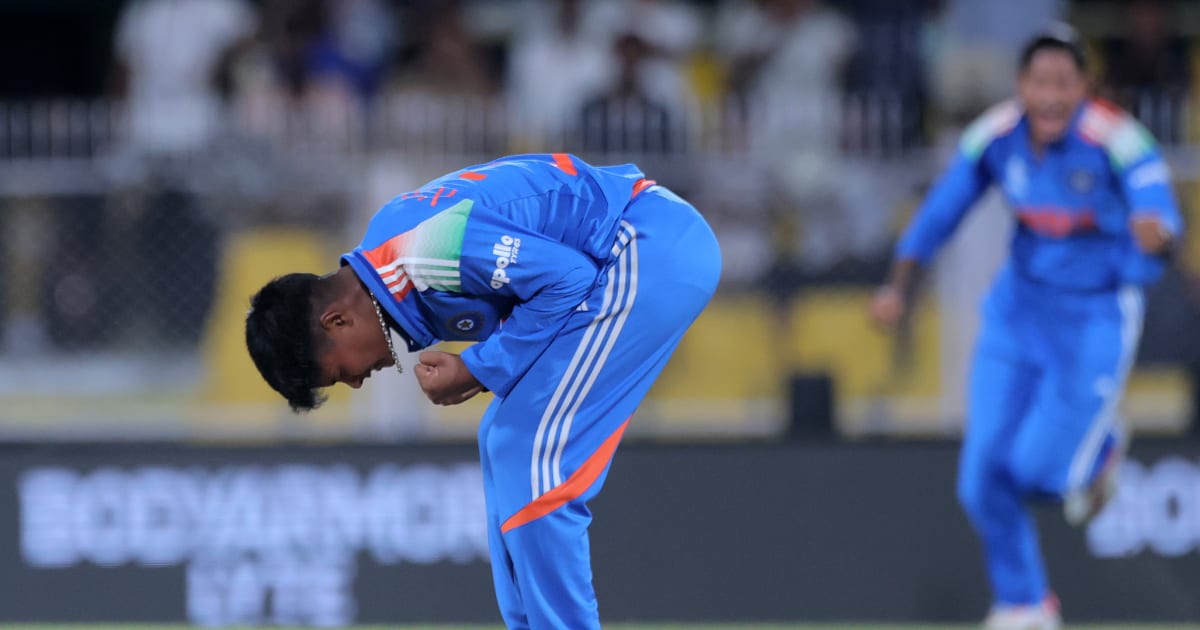Pakistan’s struggle against top-tier teams exposes their fundamental weaknesses

Eight years have passed since Pakistan cricket last tasted glory on the global stage. The 2017 ICC Champions Trophy triumph at The Oval, where Fakhar Zaman’s magnificent century and Mohammad Amir’s hostile spell demolished India by 180 runs, remains the last time Pakistan stood atop world cricket against elite oppositions.What followed has been a troubling pattern that exposes uncomfortable realities about Pakistani cricket’s current state: consistent success against lower-ranked teams coupled with repeated failures when confronted by cricket’s elite. This disparity reveals not just tactical shortcomings, but fundamental structural issues that have prevented Pakistan from competing consistently at the highest level.Success against thevulnerablePakistan’s trophy cabinet since 2017 tells a revealing story. The victories have come, but almost exclusively against weakened or lower-ranked opposition:Zimbabwe Tri-Nation T20 Series in 2018: Pakistan beat Australia in the final, but with Zimbabwe as the third team, the tournament lacked competitive depth.Bilateral dominance at home: Multiple whitewashes against second-string West Indies sides (2018, 2021), comfortable victories over Zimbabwe in Harare (2021), and routine successes against Ireland and the Netherlands created an illusion of strength.2022: New Zealand Tri-Nation Series: While beating New Zealand in the final provided some legitimacy, Bangladesh’s presence as the third team reduced the tournament’s competitive value.2025 Asia Cup: The Asia Cup 2025 final in Dubai on September 28 delivered yet another devastating blow to Pakistan cricket’s credibility against elite opposition. In a match that epitomised everything wrong with Pakistan’s approach to high-pressure cricket, the men in green collapsed from a commanding position of 107-1 to 146 all out, losing nine wickets for just 39 runs in 44 balls. Even though won but struggled against Bangladesh, Afhanistan, Sri Lanka.These successes, while providing temporary morale-boosters and ranking points, mask deeper inadequacies that become glaringly apparent against top-tier opposition.The catalogue of failures:The record is damning. A string of matches across formats and tournaments shows a repeated pattern where Pakistan’s bowlers let commanding positions slip away:T20 World Cup 2021 semi-final vs Australia: Needing 18 off 9, a struggling Matthew Wade launched Haris Rauf for back-to-back sixes, turning the game on its head. Pakistan’s campaign ended in heartbreak. With impressive group stage performances against lower-ranked teams, Pakistan fell short against Australia when it mattered the most.Asia Cup 2022 final vs Sri Lanka: At 58/5, Sri Lanka were buried. Yet Pakistan’s bowlers allowed them to post 170+, a total that proved decisive.T20 World Cup 2022 vs India: Shaheen left the field injured when India required 41 off 29. Earlier, Haris Rauf had conceded the momentum with a costly over to an out-of-form Virat Kohli, including the unforgettable six over straight. Whereas, their appearance against England ended in defeat, continuing Pakistan’s pattern of promising campaigns that falter at crucial moments.Asia Cup 2023 (Virtual Quarter-final vs Sri Lanka): Pakistan failed to defend 253 in just 43 overs, allowing a struggling Lankan batting line-up to sneak through.World Cup 2023: Conceded 345 against Sri Lanka, 282 to Afghanistan on a Chennai turner, and 270+ to South Africa - historically the weakest chasers. Against New Zealand, they let a struggling batting unit recover from 70/3 to pile up 400. Only herculean batting efforts by Rizwan, Abdullah Shafique, and Fakhar Zaman saved Pakistan from total humiliation.2025 Champions Trophy (Home): Perhaps the most damning indictment came on home soil, where Pakistan failed to register a single victory in their group, suffering heavy defeats including a humbling loss to New Zealand in the tournament opener.Recent tours to elite nations: The 2025 tour to New Zealand (a second sting) exemplified Pakistan’s struggles away from home against top teams - New Zealand swept the ODI series 3-0 and dominated the T20I series 4-1, emphasizing the gulf that persists when Pakistan faces elite opposition in challenging conditions.Associate and Emerging Nations: Perhaps most alarming are failures against non-elite sides. Haris and Shaheen couldn’t defend 190+ against Ireland, 160+ against USA (including conceding 12 runs in 3 balls), and 172 against India just recently in another T20 clash.Across Champions Trophy, Asia Cups, and World Cups, the pattern has remained consistent: when the pressure is at its peak, Pakistan’s batting as well as bowling when matters - once its pride - wilts.Asia Cup 2025: A recent example of failure. The Bangladesh wake-up callJust before the Asia Cup, perhaps nothing illustrates Pakistan’s decline more starkly than their recent struggles against Bangladesh - historically considered inferior opposition. Bangladesh’s historic Test victory in Rawalpindi in August 2024 marked their first Test win over Pakistan, signaling that Pakistan can no longer assume dominance even against teams they once routinely defeated.The subsequent competitive series between the two nations in 2025, with Bangladesh securing series wins in some formats, represents a seismic shift in South Asian cricket dynamics. What was once an automatic victory for Pakistan has become a genuine contest, highlighting how other nations have progressed while Pakistan has stagnated.Pakistan’s repeated failures in high-stakes situations against elite teams suggest deep-rooted mental fragility. The team consistently performs below their potential when facing quality opposition under pressure, whether in ICC tournaments or away tours against top-ranked nations.This mental weakness manifests in several ways: Collapse in crucial moments of important matches, inability to handle pressure situations against quality bowling, poor decision-making in tactical situations, Inconsistent performances from match to match.Tactical Inflexibility: While Pakistan can overwhelm weaker teams through individual brilliance, their tactical approach often falls short against well-organised, well-coached elite sides. The inability to adapt game plans mid-match or series has cost them dearly against teams like England, Australia, and New Zealand and now even India.Preparation and planning deficits: The contrast in Pakistan’s performance at home versus away against top teams suggests inadequate preparation for varying conditions. While they can create favorable conditions at home, their record in alien conditions against elite teams reveals poor adaptability and planning.The home advantage myth: Even Pakistan’s home record against top teams has deteriorated significantly. The 2025 Champions Trophy disaster on home soil shattered the myth that Pakistan remains formidable in familiar conditions. When facing well-prepared elite teams, even home advantage couldn’t mask fundamental deficiencies.Home series against Australia (2022), England (2022-23), and New Zealand (2023) saw Pakistan fail to capitalise on favourable conditions, often letting winning positions slip through poor execution in crucial moments.Women’s team: Pakistan’s women’s cricket team exhibits an even more pronounced version of this pattern. While securing bilateral series victories against Ireland, Bangladesh, and Sri Lanka, they have consistently fallen short against the dominant forces of women’s cricket - Australia, England, and India.The women’s team has never won a global ICC trophy, with their struggles against elite opposition even more pronounced than their male counterparts. This suggests systemic issues in Pakistan cricket’s approach to developing competitive teams capable of challenging the world’s best.The pattern of success against weaker teams and failure against elite opposition has created several developmental issues:False confidence: Players develop inflated assessments of their abilities based on success against inferior competition, leaving them unprepared for the step up in quality against elite teams.Without regular exposure to high-quality opposition, players and coaches don’t develop the tactical sophistication required to compete against the world’s best.Performances against elite teams.Asia Cup bitterness: This latest failure wasn’t merely a bad day at the office-it was a microcosm of Pakistan cricket’s fundamental inability to compete consistently.The path forwardRealistic expectations: Pakistan cricket stakeholders must acknowledge that the current team is not among the world’s elite and adjust expectations accordingly while working toward systematic improvement.Long-term development focus: Rather than seeking quick fixes, Pakistan must commit to long-term development programs designed to produce players capable of competing consistently against the world’s best.Professional management: The cricket board needs professional management structures that prioritise performance development over political considerations.The uncomfortable reality: Pakistan cricket’s pattern of success against lower-ranked teams and failure against elite opposition represents more than just poor form - it reveals fundamental structural problems that require systematic solutions. The 2017 Champions Trophy victory, while memorable, increasingly appears as an anomaly rather than evidence of consistent capability.








